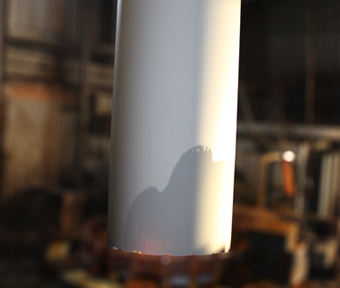Hard Chrome Plating (Technical Collaboration)
 Send Enquiry
Send Enquiry
What is 'Chrome'
Chrome is slang for Chromium, one of the 92 naturally occurring chemical elements. Chrome is a metal, but it is not useful as a solid, pure substance. Things are never made of solid chrome. Rather, when you hear that something is chrome, what is really meant is that there is a thin layer of chrome, a plating of chrome, on the object (the bulk of the object usually being steel, but sometimes aluminum, brass, copper, plastic, or stainless steel).
A cause of occasional confusion is the fact that people may tend to describe any shiny finish as "chrome" even when it really has nothing to do with chromium. For example, brightly polished aluminum motorcycle parts, electropolished stainless steel boat rigging, vacuum metallized mylar balloons and helmets, semi-shiny painted wheels, and nickel plated oven racks are sometimes called 'chrome' by the lay person.
Indeed it's not always easy to tell real chrome plating from other finishes if the parts are not side by side. When a chrome plated finish sits right next to another bright finish though, the other finish usually won't compare very favorably :-)
Chrome plating is more reflective (brighter), bluer (less pale, grayish, or yellowish), and more specular (the reflection is deeper, less distorted, more like a mirror) than other finishes. Put one end of a tape measure against a bright finish, and see how many inches of numbers you can clearly read in the reflection -- you can see skywriting clearly reflected in top quality chrome plating. And there's a hard to define "glint" to chrome plating that almost nothing else has.
What's the difference between "Chrome Plating", "Chrome Electroplating", "Chrome Dipping", "Chroming", etc.?
Nothing. Chrome is always applied by electroplating, it is never melted onto parts in the fashion of chocolate on strawberries, sprayed on like paint, or applied in any other way than by electroplating. Note the previous paragraph, though, that everything that is somewhat reflective is not necessarily real chrome plating.
Is all chrome plating about the same, then? Not quite. There are two different general applications for chrome plating: "hard chrome plating" (sometimes called 'engineering chrome plating' or 'functional chrome plating') and "nickel-chrome plating" (sometimes called 'decorative chrome plating').
Most people would not be very familiar with hard chrome plating. Hard chrome plating is chrome plating that has been applied as a fairly heavy coating (usually measured in thousandths of an inch) for wear resistance, lubricity, oil retention, and other 'wear' purposes. Some examples would be hydraulic cylinder rods, rollers, piston rings, mold surfaces, thread guides, gun bores, etc. 'Hard chrome' is not really harder than other chrome plating, it is called hard chromium because it is thick enough that a hardness measurement can be performed on it, whereas decorative chrome plating is only millionths of an inch thick and will break like an eggshell if a hardness test is conducted, so its hardness can't really be measured directly.
Hard chrome plating is almost always applied to items that are made of steel, usually hardened steel. It is metallic in appearance, and can be shiny, but is not necessarily decorative. Hard chrome plating is not a finish that you would want on a wheel or bumper.
There are variations even within hard chrome plating, with some of the coatings optimized to be especially porous for oil retention, others "thin dense chrome", and so on.
Many shops who do hard chrome plating do no other kind of plating at all, because their business is designed to serve only engineered, wear-type, needs. If a shop says they do 'hard chrome only', they have no service that most consumers would be interested in.
Send Enquiry

 Send Enquiry
Send Enquiry